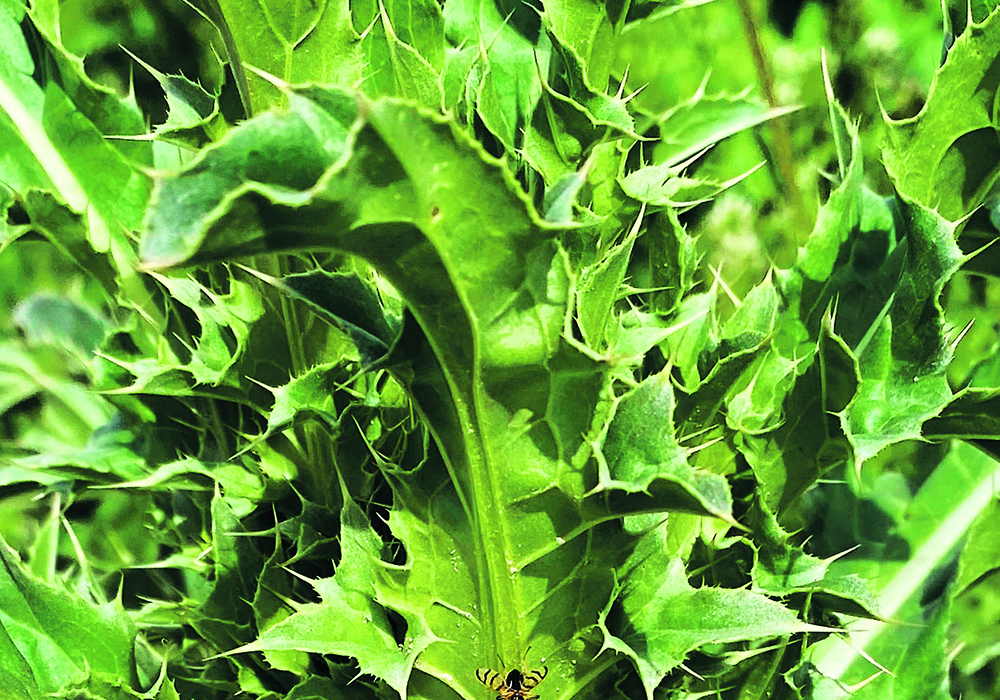Lady’s thumb likes to hitch a ride in small grain seed.
If allowed to reach maturity, the annual weed will shoot up ahead of the crop and then deliver its seed into the grain tank along with its host and could then be replanted the following spring.
Known formally as Polygonum persicaria, lady’s thumb has narrow leaves that grow up to 15 centimetres long and grow from a stem that can reach over a metre.
A papery skin covers the stem where the leaves branch off. The leaves have purple blotches on their surface, while the underside is a paler green than the top.
Read Also

Ag in Motion speaker highlights need for biosecurity on cattle operations
Ag in Motion highlights need for biosecurity on cattle farms. Government of Saskatchewan provides checklist on what you can do to make your cattle operation more biosecure.
Its leaves don’t have an abundance of hair on their undersides, unlike other members of the smartweed family.
Flowers are densely crowded onto spikes and form long clusters up to five cm in length.
Lady’s thumb hasn’t developed herbicide resistance in Canada, but in Minnesota it has shown a tolerance for Group 5, photosynthetic inhibitors or triazines, such as Atrazine.
The tap-rooted weed will produce up to 3,000 seeds if allowed to reach maturity and will be difficult to control in pulses and flax.
Higher seeding rates, an effective spring burnoff and early post emergent weed control in cereals and canola will give the plant the one thing it can’t tolerate: heavy competition.
A wide variety of herbicides are available, especially in canola and cereals.
Fewer opportunities exist in pulses, flax and special crops, other than those that are herbicide tolerant to products such as imazamox.
















